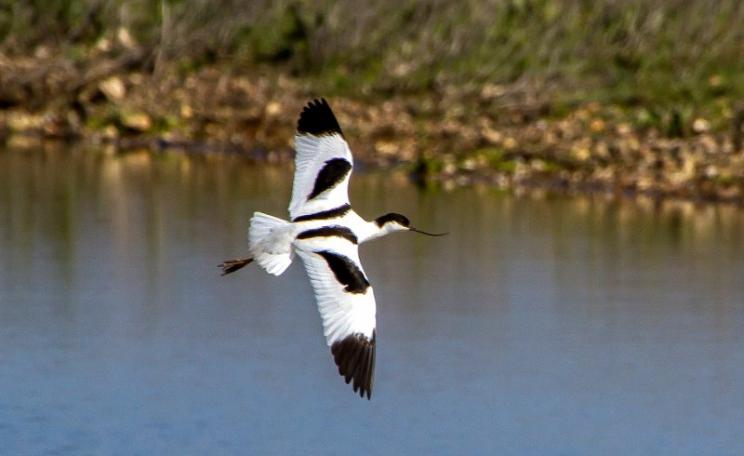Marine protected areas currently cover less than 1 per cent of the world's oceans, but even these are not properly enforced
Designated a national park in 1778 but safeguarded unofficially since the 13th century, the world’s oldest protected area is Mongolia’s sacred Bogd Khan Mountain, overlooking Ulan Bator. The Emperor of Manchur’s 18th-century edict was designed to prevent mortals from desecrating the realms of the divine. Building was restricted, logging and hunting banned.
Notions of the sacred then tally with the tenets of environmentalism now, although species and habitat conservation is the focus of the world’s 112,000 protected areas in the modern age, rather than its consequence. But with less than 6 per cent of the world’s land and 1 per cent of its oceans protected, just how successful can they be?
As a Canadian study revealed last year, biodiversity is falling across the board despite an increase in the number of areas given ‘protected’ status. There need to be more of them and they need to be bigger, argue the researchers, but there also need to be fewer people.
With the global population destined to reach 9 billion by 2050, the pressure on species and habitat is expected to grow in tandem with the difficulties of protecting them. The study identifies a ‘clear and urgent need for the development of additional solutions for biodiversity loss, particularly ones that stabilise the size of the world’s human population and our ecological demands on biodiversity’.
Another issue is that wildlife is no respecter of boundaries: migrating birds, foraging bears or shoals of fish lose what protection they have once they cross an invisible line. Those dangers may literally begin on the doorstep – as the International Union for Conservation of Nature and Natural Resources points out: ‘In many cases [protected areas] are just islands of protection in larger zones degraded by humans.’
Such degradation is often the result of broader geopolitical pressures, particularly in poorer countries. Poverty may lead to subsistence farmers clearing forest to plant crops, for example, or war displace vast populations into environmentally sensitive habitat. Human need is no respecter of boundaries either.
UK failing on protecting wildlife
But even in the UK protected areas are not always effective: a 2010 report by leading wildlife experts criticised England’s nature reserves and national parks for failing to protect species, being poorly managed, too small, too publicly accessible and not interconnected enough. Its authors recommended establishing 12 large ‘ecological restoration zones’ at an estimated cost of £1bn. In the current financial climate governments do not necessarily have the money to safeguard protected areas, let alone the political will to prevent development.
Conservation scientist Dr Luke Dollar of the Earthwatch Institute, who studies Madagascar’s largest carnivore, the fossa, suggests there is little point expanding protected areas unless management can keep pace.
‘Much is invested in strategy and planning for “corridor” type projects. Unfortunately, until a solid grasp is gained and maintained on the areas already designated for protection, we are putting the cart before the horse. Over the last decade or so, Madagascar almost tripled the square acreage of areas designated for protection. A magical tripling of able bodies and experienced managers, as well as a similar multiplication of financing, did not also follow suit.’
He adds that ‘paper parks’ – protected reserves without an intensive physical presence – are as threatened as unprotected areas. They will succeed only where conservationists and local people work together and are equally invested to achieve a balance on resource use and conservation.
There have been successes, of course. Last week 18 Madagascan pochard – the world’s most endangered duck – were hatched at a guarded nesting site on the island country. Populations of the US’s largest land carnivore have improved year on year in Montana since Grizzly Bear Management Areas were set up in the 1990s, banning hunting and limiting motorised access and development.
Protecting the seas
Marine Protected Areas (MPAs) have also been delivering results. Dr John Cigliano, a marine conservation ecologist from Cedar Crest College in Pennsylvania, is involved in efforts to preserve queen conch in the Sapodilla Cayes Marine Reserve on Belize’s barrier reef. Numbers of this threatened snail-like species have been growing steadily since the MPA was set up in 1996.
Despite calls for MPAs to be increased to cover 10-20 per cent of the world’s oceans, however, they still only cover less than 1 per cent, a fraction of which are effective, argues Cigliano. Many are not enforced.
‘Most MPAs are in shallow water; we need MPAs in the open ocean. And we need to make sure that all habitat types are protected in ways that will effectively protect those habitats in perpetuity. Connecting MPAs in networks is important because marine species are mobile, either as adults – think tuna and whales – or as planktonic larvae.’
MPAs can become victims of their own success, however: where populations of a particular species bounce back, fishing activity tends to focus on areas towards which fish gravitate outside the reserve. Effort can become concentrated if the area where fishing is allowed is a fraction of the area it used to be.
Which is why a comprehensive and integrated management plan that includes protection for the surrounding area is vital, he says. MPAs need to be properly designed and specific socioeconomic and conservation goals set – if those goals aren’t being met, things need to change.
Nowhere is this better illustrated than in Australia, whose 9,000-plus national parks, marine and nature reserves still give inadequate protection to more than 80 per cent of the country’s 1,320 threatened species.
According to a 2010 a report from the University of Queensland, 12 per cent of species exist entirely outside protected areas, while a fifth of critically endangered species have no formal protection whatsoever. If protected areas were increased (from 12 to 18 per cent of Australia’s territory) and better sited and managed, all threatened species could be secured.
Glyn Davies, director of programmes for WWF-UK, says the benefits of protected areas can vary over time as external forces change. A decade of internal strife in Nepal, for example, led to a decline in large mammal numbers both inside and outside reserves. He observes that well managed protected areas benefit people as well as the environment.
‘I recently visited Chitwan National Park in the “terai” grasslands of Nepal, where efforts have been made to build up the populations of rare large mammals – tigers and rhinos in particular. The concentration of these endangered species encourages international tourists to visit, with revenues shared directly with communities surrounding the park. I have also seen fantastic improvements in both wildlife and livelihoods in conservancies in northern Namibia, and visited parks in Colombia and Brazil where indigenous communities have requested protected areas to safeguard their values and ways of life.’
While no national park or protected area can defend against climate change – within the next 70 years 60 per cent of the giant panda’s habitat will be lost to climate change, according to a report last month in the International Journal of Ecology (China’s 40 panda reserves only protect half of its 1,000 or so bears) – Luke Dollar says it is a ‘distraction’ given the current rate of loss of global forests. ‘If we don’t get a handle on the root causes of current, ongoing loss of global forests, and attempt to directly stem those rates of depletion, there may not be a significant semblance of our current global forests on which to focus whatever climate-based consensus may emerge.’
| READ MORE... | |
 |
REVIEW Arctic Sanctuary: Images of the Arctic National Wildlife Refuge An evocative combination of stunning photography and beautiful prose drives home the natural wonder of the Arctic in Jeff Jones and Laurie Hoyle’s wonderful book |
 |
INTERVIEW Paul Collier: saying 'nature has to be preserved' condemns the poor to poverty Oxford Economics Professor and former head of Development Research at the World Bank, Paul Collier on reconciling romantic environmentalism and mainstream economics to help poor countries |
 |
HOW TO MAKE A DIFFERENCE TAKE ACTION: Don't let the government back-track on UK marine protected areas Show the government you support the creation of a marine conservation network to protect the UK's threatened sea life |
 |
NEWS UN biodiversity targets now need to be implemented say campaigners Broad welcome for new biodiversity targets, including increase in protected areas, but campaigners express concern that previous 2010 targets have still not been met |
 |
NEWS ANALYSIS What is biodiversity offsetting and how would it work? European observers say it is going to be as ‘big as the carbon market’, but is buying a licence to cause ecological damage a sound strategy? Tom Levitt investigates |








